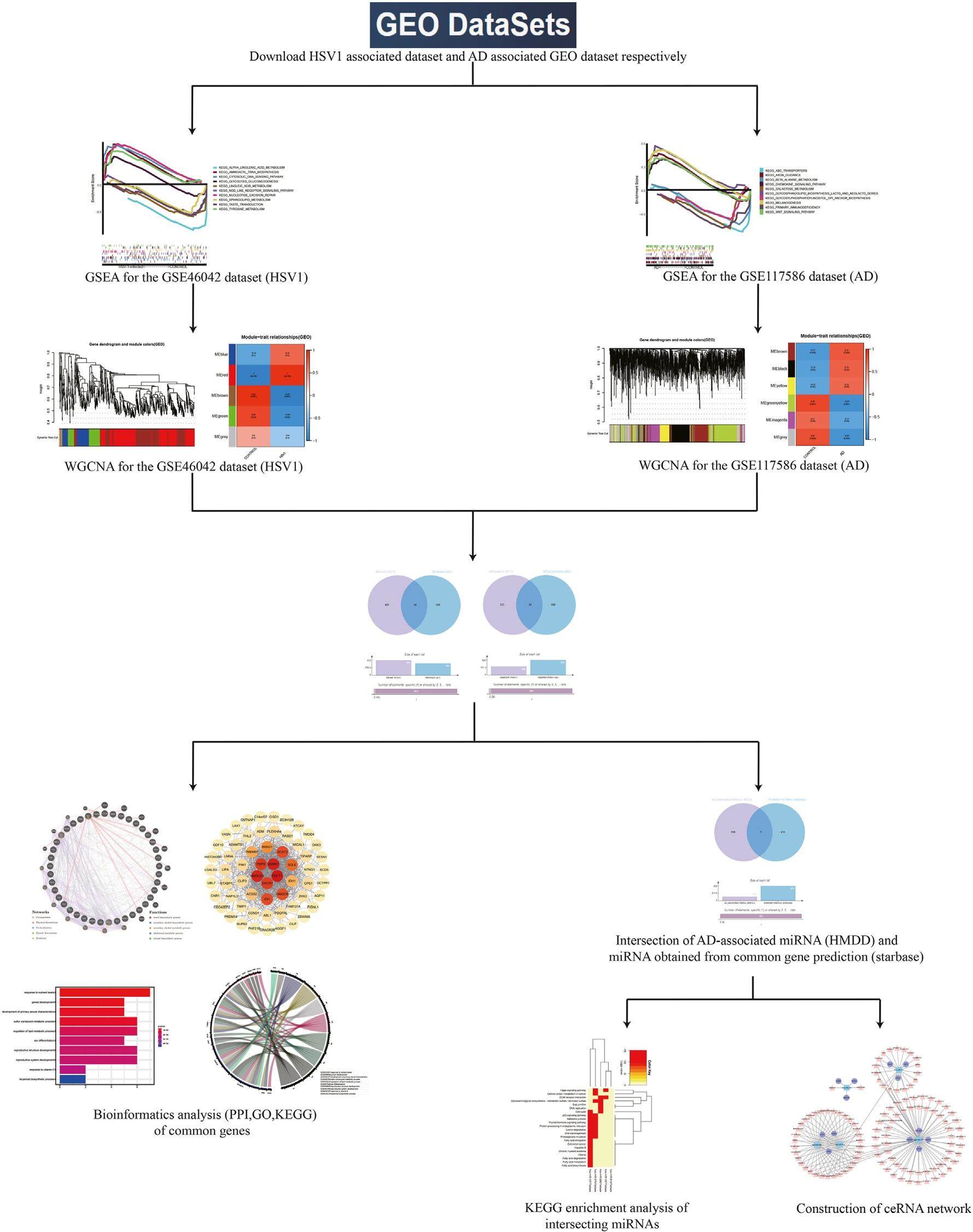
Exploration of the common gene and potential molecular mechanisms between Herpes simplex virus 1 infection and Alzheimer's disease


Herpes simplex virus 1(HSV-1)is highly infectious. More than 70% of the world's population has been infected with HSV-1. Most patients with HSV-1 have no obvious clinical symptoms. However, HSV-1 infection can lead to serious complications in people with an underlying genetic susceptibility, various causes of immunodeficiency, or immunocompromised populations. HSV-1 has the property of activating periodically in neurons and is considered to be one of the risk factors for Alzheimer's disease (AD). However, the underlying pathological mechanisms causing the development of AD induced by HSV-1 are not yet well established. With the spread of transcriptome sequencing and advances in bioinformatics technology, we can gain a deeperunderstandingoftheunderlyingpathological mechanisms behind the occurrence of disease, which can help in clinical diagnosis and clinical treatment of diseases. In the present study, we used the Gene Expression Omnibus (GEO) database to obtain sequencing datasets related to HSV-1 and AD, explored the potential pathogenesis of HSV-1 leading to AD using various algorithms in bioinformatics, and combined with public databases to construct a potential competing endogenous RNAs (ceRNA) regulatory network for HSV-1 leading to AD.
